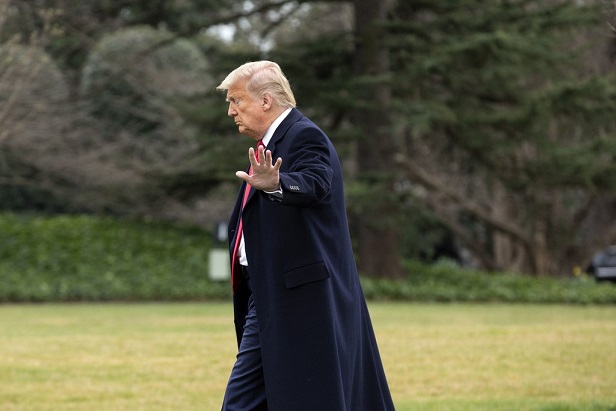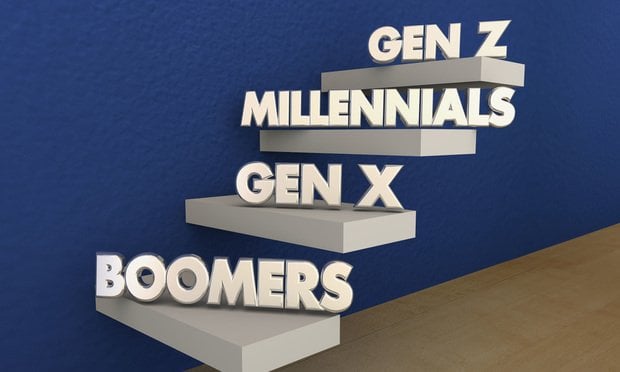President Trump reportedly pitched a payroll tax holidaythrough November's election to Senate Republicans onTuesday. Trump's payroll cuts, reported by several mediaoutlets, would be part of a larger stimulus package to counterslowing consumer demand and equity market turmoil amid the spreadof new coronavirus cases in the U.S.
|Related: Trump seems to walk back payroll tax holiday:2019
|But the idea has had a cool reception from CongressionalDemocrats, who are reportedly looking to advance legislation thatwould focus on expanded paid leave for those that are sick,extended unemployment insurance, and free testing for thevirus.
|And Senate majority leader Mitch McConnell, R-KY, is resistantto the idea of a payroll tax holiday, according to reporting in theWashington Post. In 2009, McConnell, as minority leader in theSenate, proposed a two-month payroll tax holiday to counter theaftermath of the financial crisis.
|Payroll holiday history
In 2011, Congress passed a payroll tax holiday under the Obamaadministration in an effort to provide added stimulus as theeconomy continued to recover from the financial crisis. It wasultimately extended through 2012.
|Employees' contribution to Social Security taxes went from 6.2 percent to4.2 percent. Employers, who also chip in 6.2 percent to fund SocialSecurity, did not see their portion reduced. The self-employed, whopay both the employee and employer share of the tax, saw their ratedrop from 12.4 percent to 10.4 percent.
|Last year, as the Trump administration was contemplating apayroll tax holiday, economists at the University of Pennsylvania'sWharton School modeled a 2 percent cut in workers' share of the taxfor one year.
|The model assumed the lost revenue to Social Security would bereplaced by money from Treasury's general fund, as it was under theObama administration.
|Under dynamic scoring, which accounts for taxes raised fromeconomic activity resulting from the stimulus, a one-year 2 percentpayroll holiday would result in a $141 billion loss in revenue,spread over two years.
|Wharton's modeling also projected a 0.3 percent boost in GDP forone year, while long term, the holiday would have a modest negativeimpact on GDP due to the increased debt.
|The short-term boost to GDP would come from increased labor,Penn's economists said. With greater take-home pay, more hourlyworkers would choose to work overtime. And more workers would enterthe workforce.
|Households in every income quintile would see higher take homepay. Those in the bottom 90 percent of income earners would see thelargest increase in take-home pay, in terms of percentage ofincome; the wealthiest Americans would see the smallestincrease.
|For instance, earners in the third quintile of income would seea 1.7 percent increase in take-home pay. The lowest wage earnerswould see a 1.5 percent increase. The wealthiest 0.1 percent ofearners—the so-called top 1 percent of the 1 percent—would see a 0percent increase in take-home pay.
|Trump reportedly floats full exclusion
Details of a new payroll tax holiday are spare, but Trumpreportedly floated a full exclusion holiday through the election,meaning both the employee and employer payroll obligations would berelieved.
|Analysis from the Congressional Budget Office and the Committeefor a Responsible Federal Budget shows a cut in the employee shareof the payroll tax would cost $70 billion to $75 billion for eachpercentage cut.
|Cutting the employer share would cost $55 billion to $60 billionper percentage cut—that cut would result in likely higher take-homepay, and more taxable income.
|By that math, the lost revenue to Social Security's cofferswould be staggering if a full payroll tax exclusion were extendedthrough November.
|For eight months, the loss in revenues from the employee portionof the tax would be up to $310 billion. And the loss from theemployer share would be up to $248 billion.
|READ MORE:
Complete your profile to continue reading and get FREE access to BenefitsPRO, part of your ALM digital membership.
Your access to unlimited BenefitsPRO content isn’t changing.
Once you are an ALM digital member, you’ll receive:
- Critical BenefitsPRO information including cutting edge post-reform success strategies, access to educational webcasts and videos, resources from industry leaders, and informative Newsletters.
- Exclusive discounts on ALM, BenefitsPRO magazine and BenefitsPRO.com events
- Access to other award-winning ALM websites including ThinkAdvisor.com and Law.com
Already have an account? Sign In
© 2024 ALM Global, LLC, All Rights Reserved. Request academic re-use from www.copyright.com. All other uses, submit a request to [email protected]. For more information visit Asset & Logo Licensing.









